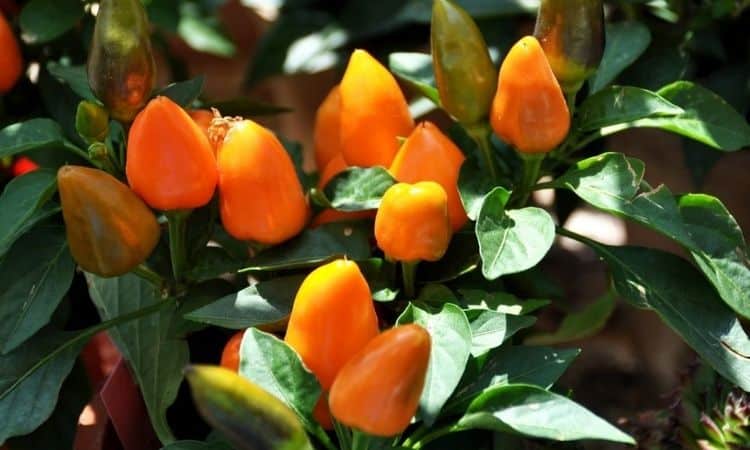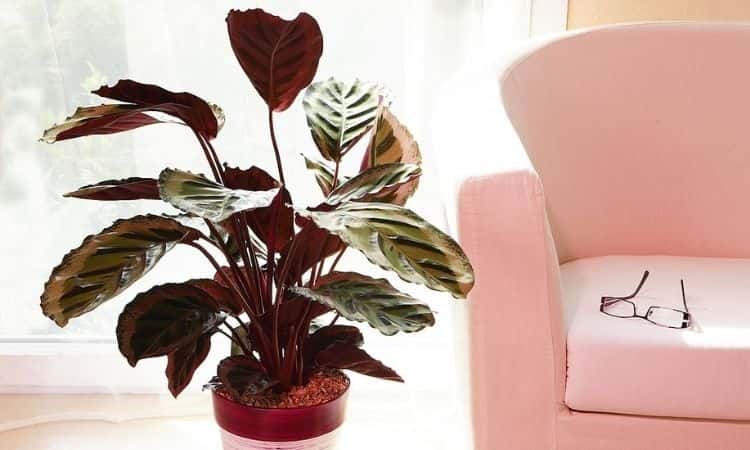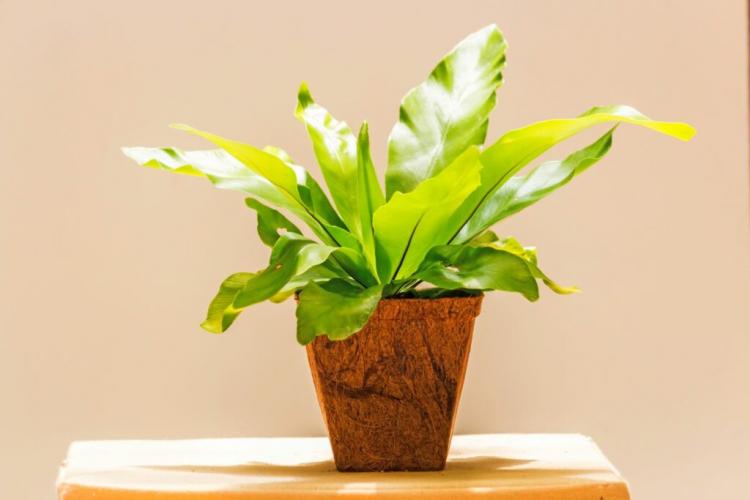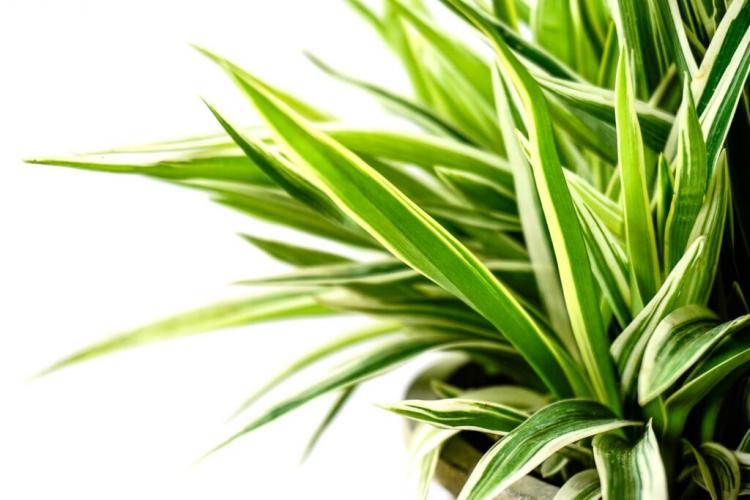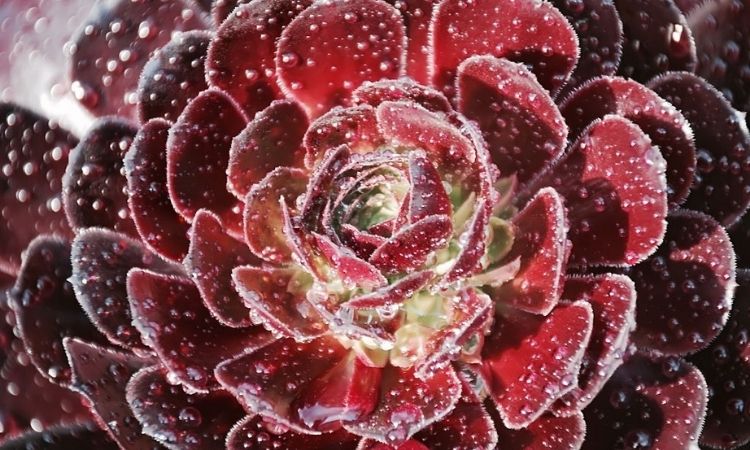Epiphyllum
The plant Epiphyllum is part of the Cactaceae family. This genus unites about 20 species. The plant was named “epiphyllum” because it has unusual spectacular foliage: from the Greek επι translates as “on, above”, and φυλλον – “leaf”.
Epiphyllum is native to the subtropical and tropical parts of America, as well as from Mexico. It was first described by Endrian Haworth in 1812. This plant is quite popular with flower growers.
Brief description of cultivation
Table of Contents
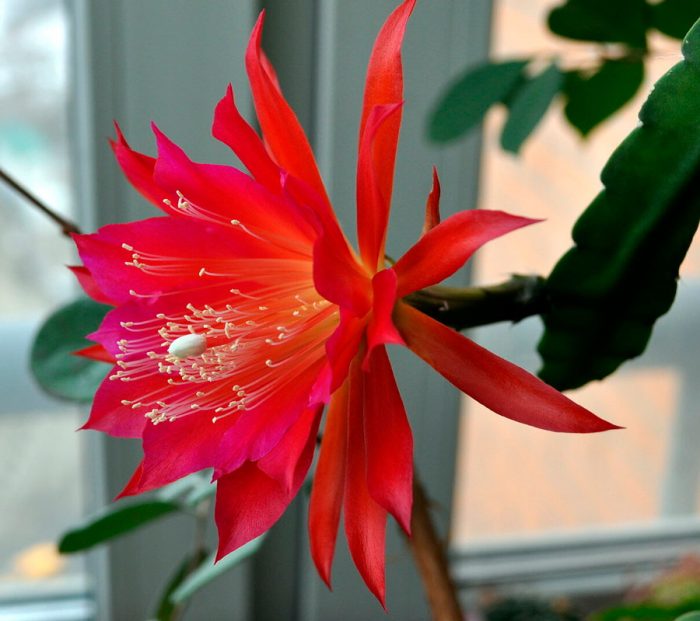
- Blooming. As a rule, it is observed in April – June. In some cases, the cactus can bloom twice a year.
- Illumination. The light should be bright but diffused. Better to choose an East or West orientation.
- Temperature conditions. During the growing season – from 20 to 25 degrees, and in November-February – from 10 to 15 degrees.
- Watering. During active growth, they are watered systematically, immediately after the top layer of the soil mixture dries out. In winter, the flower does not need watering.
- Air humidity. The plant is undemanding to the level of moisture. However, experts advise, on hot days to moisten it in the evening from a sprayer with cold water.
- Fertilizer. During the period of active growth, once every 15 days, while using fertilizer for cacti. During the formation of buds, they are fed with organic matter (mullein is combined with water in a ratio of 1: 4). During the dormant period, the plant is not fed.
- Rest period. From the last days of October to March.
- Transplant. While the cactus is young, it is transplanted once a year in the spring, at the very beginning of the growing season. Transplanting adult bushes is carried out only when it is absolutely necessary, immediately after flowering.
- Reproduction. By cuttings and seed method.
- Pruning. It is carried out 1 time in 2 or 3 years in spring at the very beginning of active growth. At this time, all the thin, round, and faceted stems are cut out. And they also remove all those branches that have faded 2 or 3 years ago.
- Pests. Scabbards, mealybugs, aphids, and spider mites.
- Diseases. Fusarium, anthracnose, black rot, and rust.
Features of the epiphyllum
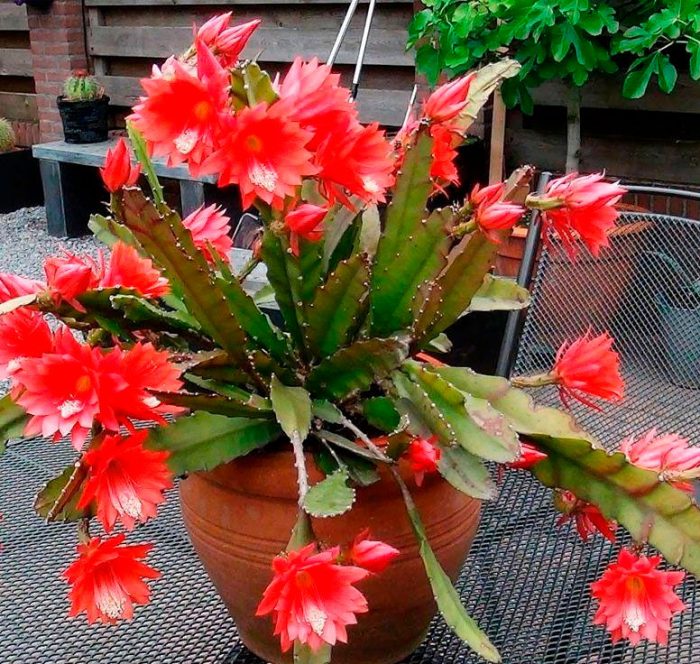
Epiphyllum, which is also called a forest cactus, or phyllotactic, is a spectacular succulent that is decorated with long branching shoots. They can be creeping or drooping, in some cases, they have a wavy edge. Shoots are both triangular and flat, they have air roots. Inexperienced growers believe that these shoots are the foliage of the forest cactus.
Funnel-shaped large white flowers are about 0.4 m long. They open in the daytime and at night. These flowers are very beautiful, so the plant is often called the orchid epiphyllum. Large, pale red fruits may be covered with thorns. They can be eaten and have a pleasant strawberry-banana-pineapple flavor. Most often this plant is cultivated in indoor conditions as an ampelous plant.
Epiphyllum care at home
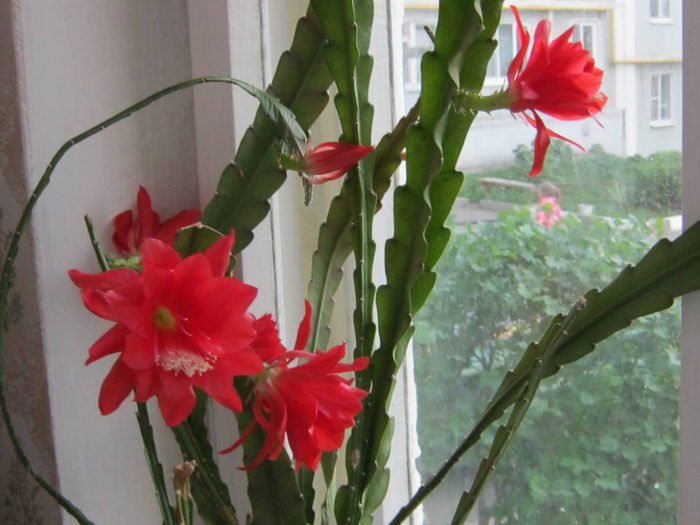
Lighting
In order for the indoor epiphyllum to develop normally and bloom luxuriantly, it is recommended to choose an eastern or western window sill for it. Remember that the bush needs a lot of bright light, which must be diffused. In the summer, it is recommended to move the succulent to the street, while choosing a place for it that will be protected from the direct rays of the midday sun.
Temperature regime
In the spring-summer period, the plant feels comfortable at temperatures from 20 to 25 degrees. Moreover, during the dormant period, which is observed in November – February, the epiphyllum is transferred to a cooler place (no warmer than 10–15 degrees).
Air humidity
This plant does not have special requirements for the level of humidity in the room. However, in hot weather, it is recommended to moisten it every day with a spray bottle. To do this, use well-settled water, the temperature of which is close to room temperature.
Watering
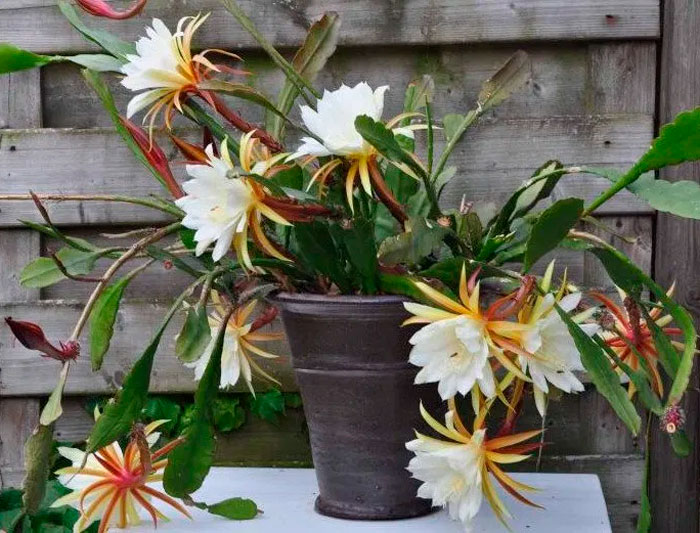
Such a succulent plant should be watered systematically. For this, you also need settled water at room temperature. Moistening of the soil mixture is carried out immediately after its top layer dries.
In the summer, the substrate in the pot is moistened more often than in the winter. If you provide a cool winter for the plant, then you can not water it at all at this time. After the onset of the spring period, the flower is transferred to its usual place and begins to water again: at first, the substrate is rarely moistened, but gradually watering is increased.
Topdressing
Indoor epiphyllum needs to be fed. In spring and summer, this is done regularly: once every 15 days. To do this, use a special mineral complex for cacti, while preparing the solution, you should follow the instructions on the package.
During the formation of buds, the bush is fed with a mullein solution (1: 4). When the epiphyllum fades, top dressing is carried out twice a month, alternately using mineral nitrogen fertilizer for indoor flowers and organic matter. When the plant is dormant, there is no need to feed it.
Bloom
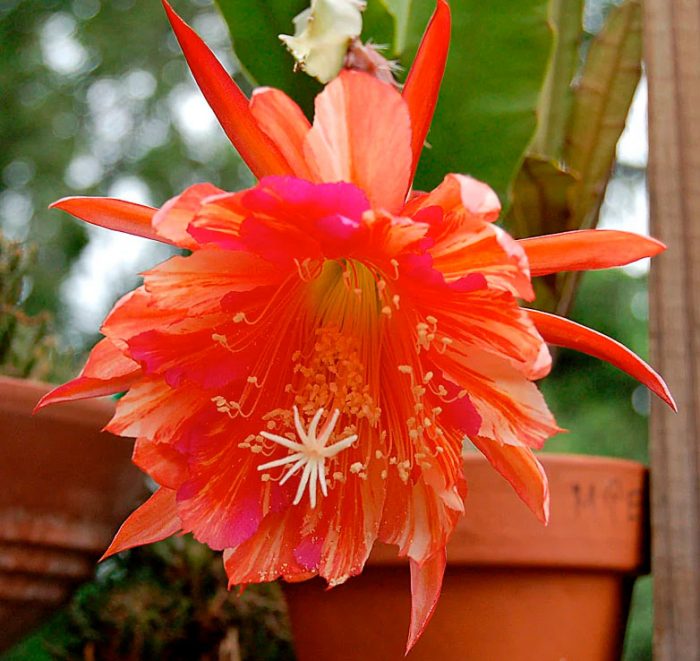
After the formation of buds on the bush begins, it should not be disturbed at all. Under no circumstances should the flower be transferred to another place and do not even turn the container with the bush around its axis. The fact is that this can provoke flying around both buds and flowers.
The opening of the flowers takes place in turn, with the life expectancy of each is about 7 days. Some species and varieties bloom twice a year: in the spring and autumn months.
A flowering bush should not feel a lack of nutrients and moisture. The pot should be placed on a pallet so that excess liquid does not accumulate in the substrate. The fact is that stagnation of moisture in the roots can cause the development of various diseases.
Pruning
To make the bush look neat, it needs systematic pruning, which is carried out as the shoots grow back. To keep the bush in a tidy state, you should regularly cut out all the round or faceted shoots in cross-section, since buds will never form on them. Also, don’t forget to shorten flat shoots.
When pruning flat shoots, it should be borne in mind that the formation of buds occurs on those stems that grew last year. Therefore, adult shoots, which already had flowers, cannot bloom again. However, such stems can be trimmed only after 2 or 3 years, since they provide the bush with normal vital activity.
Shoots with cork growths formed on them must be removed without fail. You should also cut off those shoots that grow inside the bush or are curved, and do not forget to remove the flowers that have begun to fade. Places of cuts are sprinkled with coal powder.
Why does epiphyllum not bloom
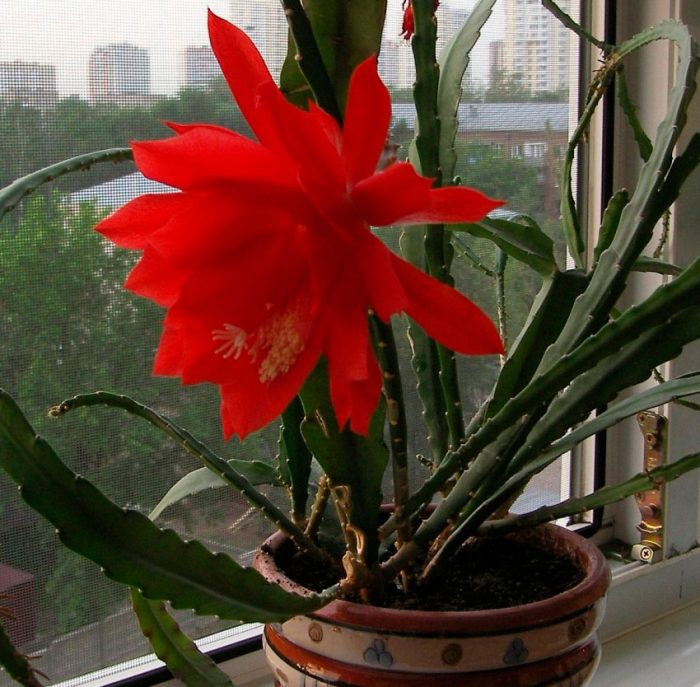
Florists often complain that the epiphyllum refuses to bloom. There can be quite a few reasons for this:
- excessively poor lighting;
- very frequent and abundant moistening of the substrate in the pot in winter (subject to cool wintering);
- wintering in a warm place;
- excess nitrogen in the substrate.
To make the bush bloom, you should provide it with comfortable growing conditions. Refusal to bloom indicates that you are not properly caring for the epiphyllum or did not provide it with the necessary conditions for development. You should check if the bush has enough nutrients, moisture, and light. Temporarily stop feeding the plant with nitrogen. Send the bush to a cool place for the winter (no higher than 12 degrees). Having fulfilled all these conditions, one can hope that the bush will bloom next season.
Epiphyllum transplant
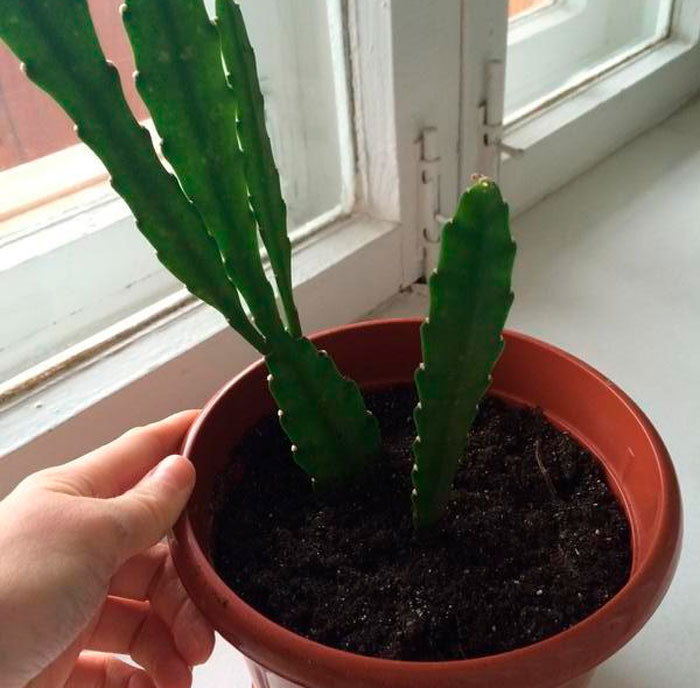
Since the young phyllotactic is characterized by rather rapid growth, it should be provided with a regular transplant, which is carried out every year in the spring. However, do not transplant the plant into an oversized pot. Adults and old bushes are transplanted into a new pot only if absolutely necessary, for example, if the roots become very cramped in the container. This procedure is carried out after the bush has faded.
For planting and transplanting the epiphyllum, choose a low and wide pot, which can be plastic or ceramic. A drainage layer must be made at the bottom. To do this, you can use pieces of foam, expanded clay, or pebbles. You can buy soil mixture at a specialized store, as well as make it yourself: combine leaf and sod soil, as well as fibrous peat, charcoal, and coarse sand (4: 4: 1: 1: 1). Remember that there should be no lime in the soil mixture. The fact is that the optimum substrate pH for a given plant is 5–6.
Epiphyllum pests and diseases
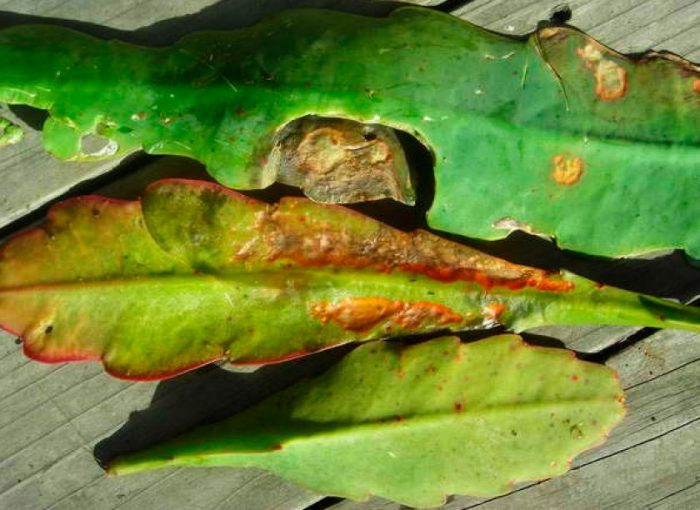
Pests
Most often, the epiphyllum suffers from pests such as scale insects, mealybugs, aphids, and spider mites.
- Mealybugs, which are also called ” hairy lice “, are sucking pests that use vegetable juice as food. On the surface of the plant, they leave a cotton-like waxy coating of white. In the bush affected by the worms, there is a noticeable lag in development. But their main danger is that they can carry viral diseases that are considered incurable. In order to destroy such pests, wipe all the aerial parts of the flower with a cotton pad or a soft brush, which should be moistened with a soap solution or alcohol. Thus, you will not only remove all pests but also clear the bush of traces of their vital activity. If there are a lot of worms, then spray the bush 3 times with a solution of Confidor, Fitoverm, Aktara, or Mospilan, while the break between sessions should be 7 days.
- Sucking insects as is the aphid. Its appearance is always considered a big surprise. She sucks the juice from the epiphyllum, as a result of which it stops growing and developing, and also begins to fade. In addition, aphids can become a carrier of dangerous viral diseases. You can destroy the pest with a solution of a special agent, while most often flower growers use Biotlin and Untitled.
- As a rule, spider mites appear on those bushes that are in a room with very low air humidity. They also feed on the sap of the plant, while causing significant harm to the succulent. To get rid of such a pest, insectoacaricides are used, for example, Aktellik, Aktaru, etc.
- Scabbards are rather small insects, the back of which is very dense and strong, like a shield. They also suck the sap from the plant, which makes it weaken. The first step is to remove the shield from the bush mechanically, then it is sprayed with a solution of a systemic insecticide. If necessary, then after 15 days the epiphyllum is treated 1 more time.
Possible problems
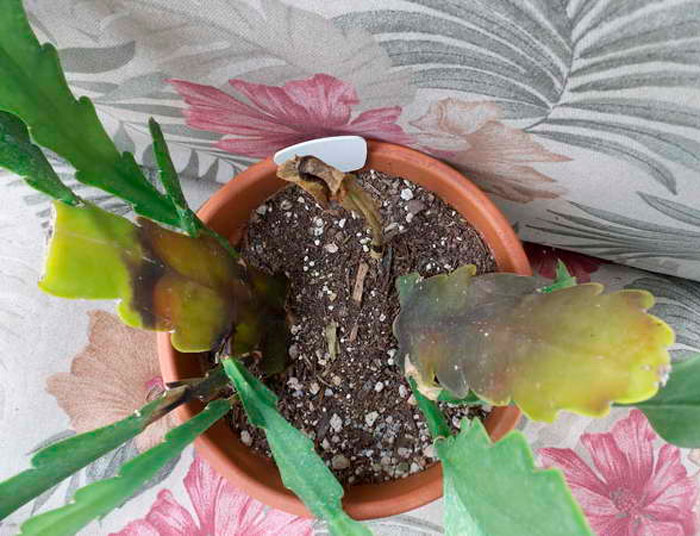
Problems with such a succulent plant can also arise if it grows in unsuitable conditions for it or is improperly looked after, for example:
- Foliage wrinkling and drying. This is due to excessively intense lighting and poor watering.
- Stopping growth. If the bush is placed in a place with unsuitable conditions for it, then it not only stops growing, but also its foliage changes color, and flowers and buds quickly fly around.
- Drying and dying off of shoots. Roots were injured during transplantation.
- Cracking of stems. There are too many nutrients in the soil mixture.
- Rot on the roots. It can appear for various reasons: damage by fusarium, stagnation of moisture in the root system, overheating of the earthy coma in the sun or moistening the soil mixture with cold water. How to save a flower that has rot on its roots is described in detail above. Remember that you must definitely change the substrate to a fresh one, and also cut out all the affected roots. Do not forget to apply charcoal powder to the cuts.
Reproduction methods
Epiphyllum can be propagated in three ways: by cuttings, dividing the bush, and by seed.
Growing from seeds
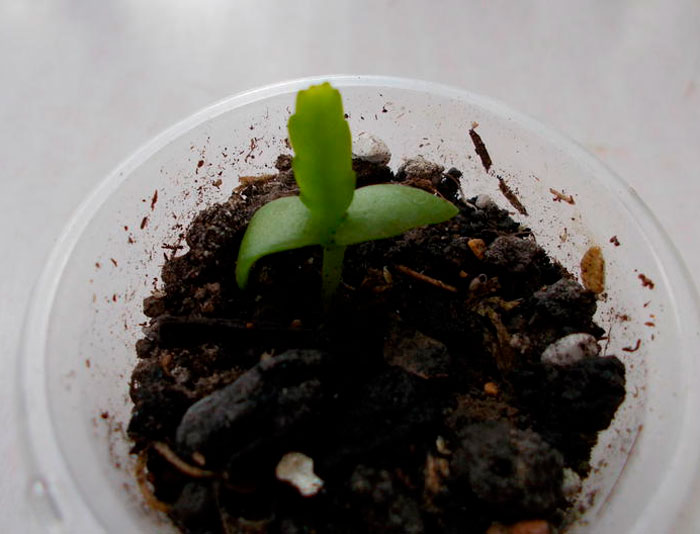
It is quite easy to propagate such a succulent by seed. Take a bowl and fill it with moistened cactus potting soil. Sow seeds into it, cover the crops with foil on top, and put them in a warm place (20 to 23 degrees). Provide crops with daily ventilation, which can last from 30 to 60 minutes. After the appearance of faceted seedlings, which outwardly resemble cacti, the shelter is removed.
As they grow, young shoots become flat and their thorns disappear. If you take care of them correctly, then in the fourth or fifth year of growth, they will begin to bloom.
Dividing the bush
A large epiphyllum bush can be divided into several parts if necessary. This procedure is combined with a transplant and is carried out only when the bush fades.
Pull out the bush and free the roots from the soil mixture. Then divide it into several parts. Please note that each cut should have completely healthy young shoots and powerful roots. Dead or rotten roots should be removed, the cuts should be sprinkled with coal powder. Then the slices are planted in small individual bowls, at the bottom of which a drainage layer is made. How to use the soil mixture is described in detail in the “Transfer” section. At first, the slices are kept in a shaded place and provide systematic scanty watering.
Propagation by stem cuttings
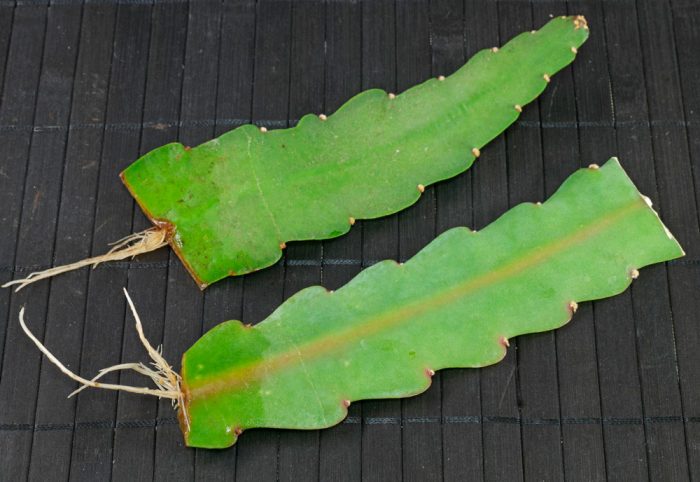
With stem cuttings, succulent can be propagated only from the first days of April, until the last days of May. Cut a shoot from the parent bush, the length of which should be 10 to 13 centimeters. The bottom cut should be wedge-shaped. Place the cutting in an empty glass and let it sit for 2 days. During this time, all excess juice should flow out of the cut. Next, the segment is planted in a soil mixture, which includes perlite and soil (1: 3).
The cutting is deepened into the substrate by only 10 mm, after which the surface of the soil mixture is covered with a layer of sand, the thickness of which should be about 20 mm. The height of the container used for rooting the segments should be no more than 70 mm. The cuttings should be in shade for the first time, and the first time they are watered only after 2 days have passed after planting.
Types of epiphyllum with photos and names
Under indoor conditions, both natural epiphyllum species and hybrids are grown.
Epiphyllum oxypetalum
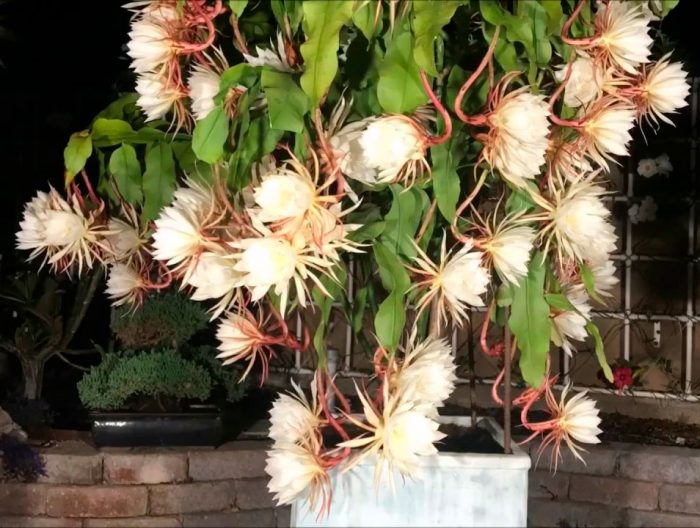
The species is the most popular in culture. Its large bush can reach a height of about 300 centimeters. Rod-shaped stems lignify over time in the lower part. They are flat and have a wavy edge; the shoots are up to 10 centimeters wide. The length of the white flowers is about 20 centimeters, and in diameter, they reach up to 18 centimeters. The species has hybrids that differ from each other in color and size of flowers.
Epiphyllum anguliger
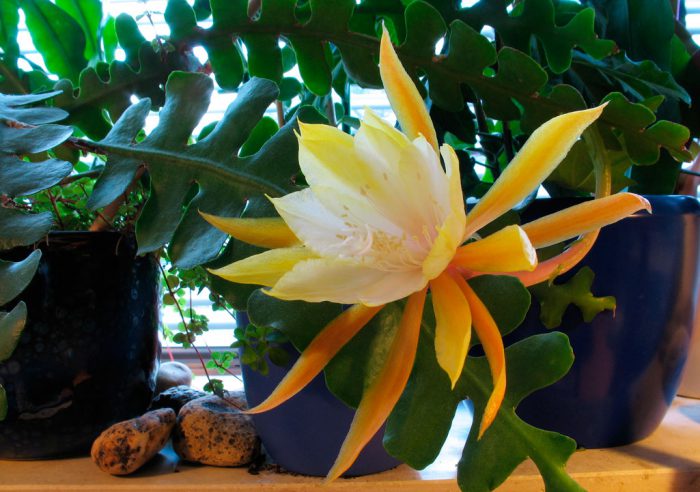
The bush is distinguished by its strong branching. Dark green rounded (maybe triangular) shoots lignify in the lower part, while in the upper part they are triangular or flat. Their width is 40–80 mm, and their length is about 100 cm. The deep red, fragrant large flowers reach about 80–100 mm in diameter.
Epiphyllum hookeri
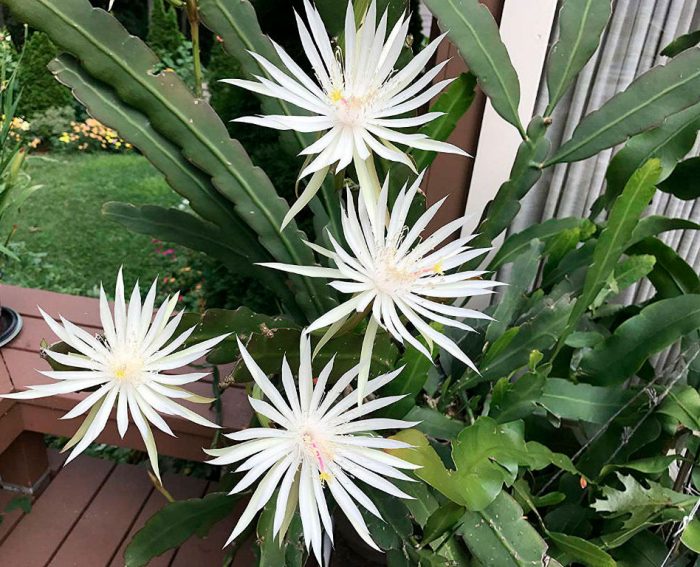
It occurs naturally in Venezuela, Cuba, and Mexico. There, the bushes can grow really huge. On long shots, large white flowers with a subtle odor are formed. The stems are very heavy and therefore arched downward.
Epiphyllum crenatum
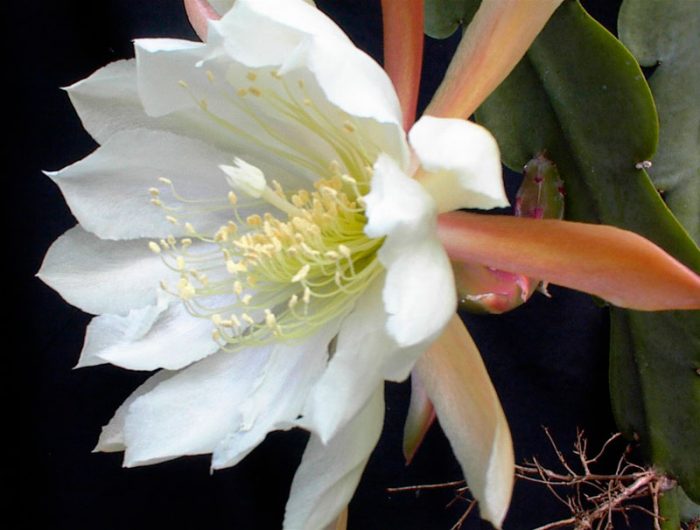
It is a semi-epiphytic cactus. Its greenish-blue shoots are about 0.7 m long and up to 10 centimeters wide. There are many deep cutouts on the hem. In diameter, fragrant flowers reach about 15 centimeters. The species has many hybrids that differ in flower color.
Epiphyllum phyllanthus

This species grows in South America. The length of the stems is about 100 cm, while the length of its secondary leaf shoots is 25–50 cm. The diameter of pink flowers is 15–18 cm.
Epiphyllum guatemalense
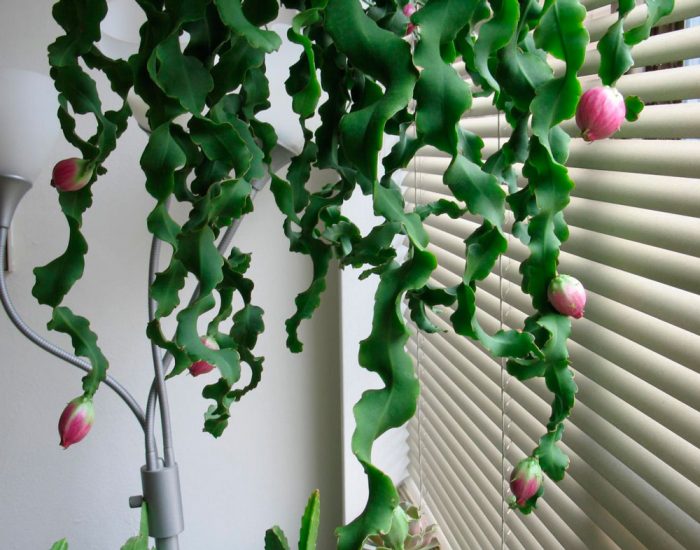
Its shoots look as if they were joined together by 50 mm oak leaves. There is a variety of monstrosa: its shoots can change the shape of the shoots and wriggle in a chaotic manner. The flowers of the species are colored in various shades of pink.
Epiphyllum thomasianum
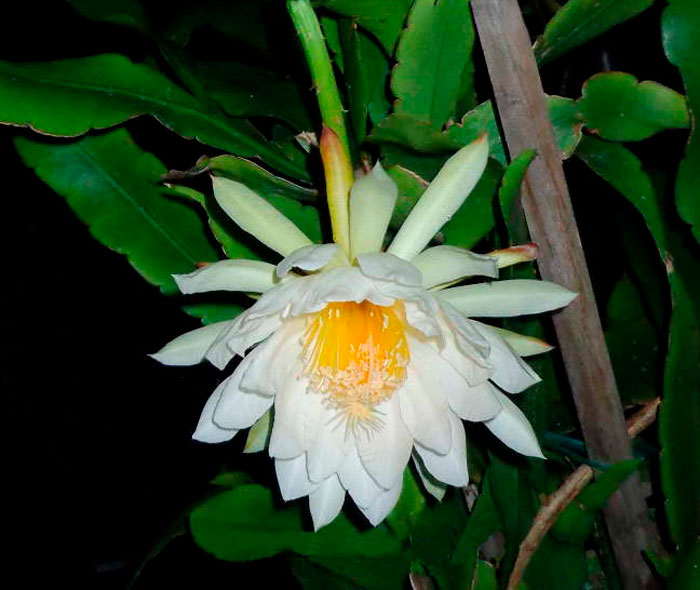
In the wild, the shoots of the plant are about 400 cm long, and in indoor ones – about 70 cm. The center of large white flowers is yellow, in diameter they reach up to 25 centimeters.
Epiphyllum ackermanii

The shoots of the plant are hanging. At a height of 40–70 mm from the base, they have multi-toothed flat processes. Fiery red flowers adorn the slender stems.
Epiphyllum laui
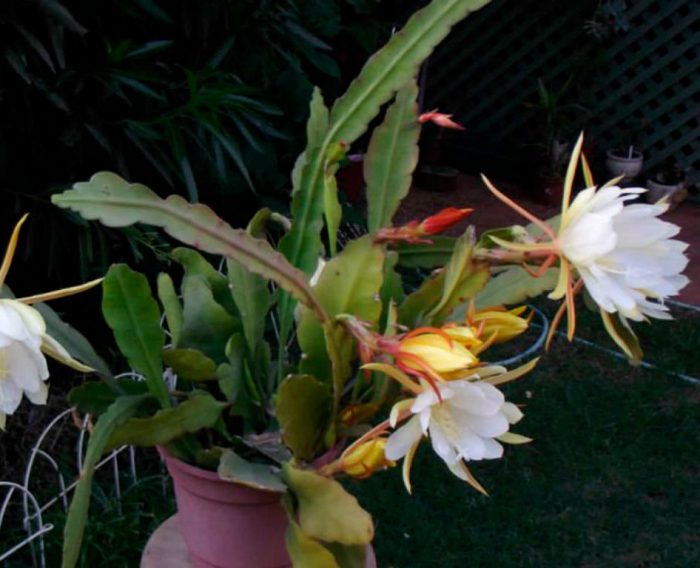
This lithophytic and epiphytic species is characterized by rapid growth. In diameter, the main stems reach about 20 mm, and the lateral ones – up to 70 mm. On the stems, there are hair-like spines of a brown-yellow hue, which are about 0.4 cm long. The opening of creamy-white flowers is observed in the evening. The life span of each flower is approximately 2 days.
Popular hybrids:
- An unnamed hybrid created by F. Nunn. The center of the flower is white, then it smoothly turns into pinkish color, and the edge of the petals has a deep purple hue.
- King Midas. The length of dark green shoots is about 150 cm. Large orange-yellow, almost golden, flowers reach up to 16.5 centimeters in diameter.
- Just Prue. The center of the flowers is pinkish, and the petals are dark pink along the edge. In diameter, they reach 12 to 16 centimeters.
- Johnson. The color of the flowers is dark scarlet.
- Wendy Mae. Flowers of a deep crimson color have an unusual shape: the petals growing in the center are short and with rounded tops, and along the edges are long and sharp.
- Jennifer Ann. Large flowers have a lemon shade.
- Martin. Cascading shoots are divided into small oval-shaped segments. Fragrant elongated flowers have a red color, while their middle is yellowish.

